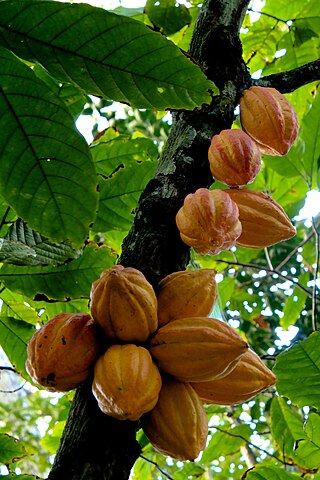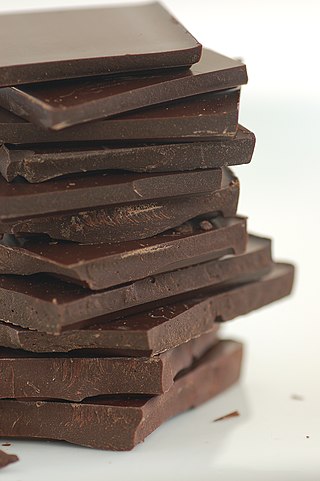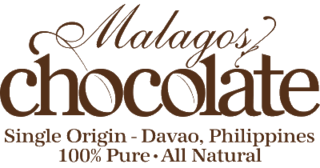This article needs additional citations for verification .(January 2019) |


Raw chocolate, or raw ground chocolate paste when ground, is chocolate produced from cocoa beans that does not contain any additives like sugars.
This article needs additional citations for verification .(January 2019) |


Raw chocolate, or raw ground chocolate paste when ground, is chocolate produced from cocoa beans that does not contain any additives like sugars.
Cacao originated in Mesoamerica around 5,300 years ago [ History of chocolate], where it was first domesticated by the Mayo-Chinchipe culture in present-day southeast Ecuador. Cultivation of cacao spread across the region, encompassing areas of modern-day Mexico, Central America, and parts of South America [1]
Cacao held a central role in indigenous cultures, where it was not only prized for its taste but also imbued with ritual and social significance. Among diverse communities, from the Mayans to the Aztecs, cacao was viewed as a sacred substance, consumed in ceremonial contexts and esteemed for its perceived medicinal and spiritual properties. [1]
As a beverage, chocolate became a symbol of unity and hospitality, enjoyed in communal gatherings and offered as a sign of goodwill. However, the arrival of the Spanish in the early sixteenth century marked a pivotal moment in the history of cacao. [2] Chocolate was introduced to Europe in the seventeenth century and was marketed as an "Indian Drink" because a large portion of cocoa beans were imported from the West Indies, today known as the Caribbean region. [3]
With the onset of colonisation, the Spanish recognized the economic potential of cacao and began to develop its trade on a global scale. Utilising indigenous labor and implementing colonial policies, the Spanish established cacao plantations in regions such as present-day Mexico, Central America, and the Caribbean. This expansion of cacao cultivation transformed it from a local delicacy into a valuable commodity for international trade. [1]
Chocolate's quality is heavily impacted by the basic raw materials and various steps of its manufacturing process. Traditional chocolate-making steps include conching, tempering, emulsification, flavouring, fermentation, drying, roasting, and grinding cocoa seeds, which are then combined with materials such as cocoa mass, sugar, cocoa butter, and, in certain cases, milk components. [4] Crucial chemical reactions occur throughout these processes, particularly during fermentation, drying, roasting, and conching, which have a substantial impact on the final product's flavour and texture. Furthermore, these stages cause chemical changes that alter the biological properties of cocoa seeds.
In contrast to traditional chocolate, which requires roasted cocoa beans, raw chocolate is produced using unroasted cocoa beans, cocoa butter, and cane sugar. This differs from regular chocolate where the cocoa beans must be roasted. Keeping the cocoa beans unroasted is believed to give raw chocolate more health benefits than regular chocolate due to its high magnesium level ad alternative sugars. [4] Because of the precision required to make raw chocolate, the beans must not exceed 48 degrees Celsius.
Crushing and deshelling cocoa beans, refining cane sugar, and conching cocoa butter are all steps in the raw chocolate production process, followed by moulding and refining the combination at a regulated temperature over several weeks. The chocolate is then tempered, crystallised, taken from the mould, and packaged. Raw cocoa has been linked to a variety of health advantages, including relaxation, due to its high magnesium content. [4]
Raw chocolate represents a fast-growing segment of the chocolate industry. It is often made in small batches. It has been promoted as having higher concentrations of some nutrients, [5] although few studies have been conducted to support this. [5] According to research, more than 200 ingredients, found in chocolate and cocoa tree seeds (beans), may promote health and wellbeing. However, several of those chemicals—like serotonin, phenylethylamine, and acylethanolamines—do not exist in sufficient concentrations to have a positive impact on health. [4] The low-heat or "cold" production process (which avoids roasting) may help to preserve the polyphenols present in cocoa. [6] Many marketers produce raw chocolate that is certified organic or fairly-traded. [7]
The aphrodisiac and anti-depressive qualities combined with specific sensory aspects of chocolate extend its effects beyond the cardiovascular system, metabolic diseases, neurological problems, and psychological profiles. Moreover, the potential health advantages of antioxidants and other substances found in the phytochemical composition of dark chocolate and cocoa have garnered more attention in the last fifteen years. [4]
As of 2018, the world's yearly consumption of cacao was estimated to be 4.6 million metric tons, a 3.9% increase from 2017. [8]

Chocolate or cocoa is a food made from roasted and ground cacao seed kernels that is available as a liquid, solid, or paste, either on its own or as a flavoring agent in other foods. Cacao has been consumed in some form for at least 5,300 years starting with the Mayo-Chinchipe culture in what is present-day Ecuador and later Mesoamerican civilizations also consumed chocolate beverages before being introduced to Europe in the 16th century.

Nutella is a brand of brown, sweetened hazelnut cocoa spread. Nutella is manufactured by the Italian company Ferrero and was introduced in 1964, although its first iteration dates to 1963.

The cocoa bean or simply cocoa, also called cacao, is the dried and fully fermented seed of Theobroma cacao, the cacao tree, from which cocoa solids and cocoa butter can be extracted. Cocoa trees are native to the Amazon rainforest. They are the basis of chocolate and Mesoamerican foods including tejate, an indigenous Mexican drink.

Theobroma cacao is a small evergreen tree in the family Malvaceae. Its seeds, cocoa beans, are used to make chocolate liquor, cocoa solids, cocoa butter and chocolate. Native to the tropics of the Americas, the largest producer of cocoa beans in 2018 was Ivory Coast, at 2.2 million tons. Its leaves are alternate, entire, unlobed, 10–50 cm (4–20 in) long and 5–10 cm (2–4 in) broad.

A chocolate bar is a confection containing chocolate, which may also contain layerings or mixtures that include nuts, fruit, caramel, nougat, and wafers. A flat, easily breakable, chocolate bar is also called a tablet. In some varieties of English and food labeling standards, the term chocolate bar is reserved for bars of solid chocolate, with candy bar used for products with additional ingredients.
In chocolate making, the Broma process is a method of extracting cocoa butter from roasted cocoa beans, credited to the chocolatier Domingo Ghirardelli. The Broma process involves hanging bags of roasted cocoa beans in a very warm room, above the melting point of cocoa butter, and allowing the butter to drip off the beans, where it is collected. The Dutch process adds an extra processing step to the Broma process whereby, after the cocoa butter has been drained off, the beans are soaked in an alkaline solution to make them chemically neutral.

A chocoholic is a person who craves or compulsively consumes chocolate. The word "chocoholic" was first used in 1968, according to Merriam-Webster. It is a portmanteau of "chocolate" and "alcoholic". The term is used loosely or humorously to describe a person who is inordinately fond of chocolate; however, there is medical evidence to support the existence of actual addiction to chocolate. Psychoactive constituents of chocolate that trigger a ‘feel-good’ reaction for the consumer include tryptophan and phenylethylamine, which may contribute to cravings and addiction-like responses, particularly in people with specific genetic alleles. The quantity of sugars used in chocolate confections also impacts the psychoactive effects of chocolate.

Conching is a process used in the manufacture of chocolate whereby a surface scraping mixer and agitator, known as a conche, evenly distributes cocoa butter within chocolate and may act as a "polisher" of the particles. It also promotes flavor development through frictional heat, release of volatiles and acids, and oxidation. The name arises from the shape of the vessels initially used which resembled conch shells.

Coenraad Johannes van Houten was a Dutch chemist and chocolate maker known for the treatment of cocoa mass with alkaline salts to remove the bitter taste and make cocoa solids more water-soluble; the resulting product is still called "Dutch process chocolate". He is also credited with introducing a method for pressing the fat from roasted cocoa beans, though this was in fact his father, Casparus van Houten's invention.
CocoaVia is a brand name for a daily cocoa extract supplement. The name CocoaVia is a registered trademark of Mars, Incorporated.

Chocolate is a food product made from roasted and ground cocoa pods mixed with fat and powdered sugar to produce a solid confectionery. There are several types of chocolate, classified primarily according to the proportion of cocoa and fat content used in a particular formulation.

The history of chocolate dates back over 5,000 years. The cacao tree is native to the tropics of the Americas. The cocoa bean was first domesticated at least 5,300 years ago in what is present-day southeast Ecuador by the Mayo-Chinchipe culture, before being introduced in Mesoamerica. Originally prepared as a drink, chocolate was served as a bitter liquid, mixed with spices or corn puree. In Mesoamerica, it was believed to be an aphrodisiac and to give the drinker strength. Today, such drinks are also known as "Chilate" and are made by locals in the south of Mexico and the north triangle of Central America. After its arrival to Europe in the sixteenth century, sugar was added to it and it became popular throughout society, first among the ruling classes and then among the common people. In the 20th century, chocolate was considered essential in the rations of United States soldiers during war.

Tejate is a non-alcoholic maize and cacao beverage traditionally made in Oaxaca, Mexico, originating from pre-Hispanic times. It remains very popular among the indigenous Mixtec and Zapotec peoples, especially in rural areas. It is also very popular in Oaxaca and the surrounding regions. Principal ingredients include toasted maize, fermented cacao beans, toasted mamey pits (pixtle) and flor de cacao. These are finely ground into a paste. The paste is mixed with water, usually by hand, and when it is ready, the flor de cacao rises to the top to form a pasty foam. It can be served as-is or with some sugar syrup to sweeten it. The drink is served cold.

Dry cocoa solids are the components of cocoa beans remaining after cocoa butter, the fatty component of the bean, is extracted from chocolate liquor, roasted cocoa beans that have been ground into a liquid state. Cocoa butter is 46% to 57% of the weight of cocoa beans and gives chocolate its characteristic melting properties. Cocoa powder is the powdered form of the dry solids with a small remaining amount of cocoa butter. Untreated cocoa powder is bitter and acidic. Dutch process cocoa has been treated with an alkali to neutralize the acid.
Alkylpyrazines are chemical compounds based on pyrazine with different substitution patterns. Some alkylpyrazines are naturally occurring highly aromatic substances which often have a very low odor threshold and contribute to the taste and aroma of various foods including cocoa, baked goods, coffee and wines. Alkylpyrazines are also formed during the cooking of some foods via Maillard reactions.
The following outline is provided as an overview of and topical guide to chocolate:

Dry roasting is a process by which heat is applied to dry foodstuffs without the use of oil or water as a carrier. Unlike other dry heat methods, dry roasting is used with foods such as nuts and seeds, in addition to some eaten insects such as house crickets. Dry-roasted foods are stirred as they are roasted to ensure even heating.

Dark chocolate is a form of chocolate containing only cocoa solids, cocoa butter and sugar. Dark chocolate without added sweetener is known as bitter chocolate or unsweetened chocolate. As with the other two main types of chocolate, dark chocolate is used for chocolate bars or as a coating in confectionery.
The chocolate industry in the Philippines developed after introducing the cocoa tree into Philippine agriculture. The growing of cacao or cocoa boasts a long history stretching from the colonial times. Originating from Mesoamerican forests, cacao was first introduced by the Spanish colonizers four centuries ago. Since then the Philippine cocoa industry has been the primary producer of cocoa beans in Southeast Asia. There are many areas of production of cacao in the Philippines, owing to soil and climate. The chocolate industry is currently on a small to medium scale.

Malagos Agri-Ventures Corporation is a Philippine bean-to-bar chocolate manufacturer based in Davao City.
{{cite journal}}: Check |url= value (help){{cite journal}}: CS1 maint: multiple names: authors list (link){{cite news}}: CS1 maint: multiple names: authors list (link){{cite journal}}: CS1 maint: multiple names: authors list (link)